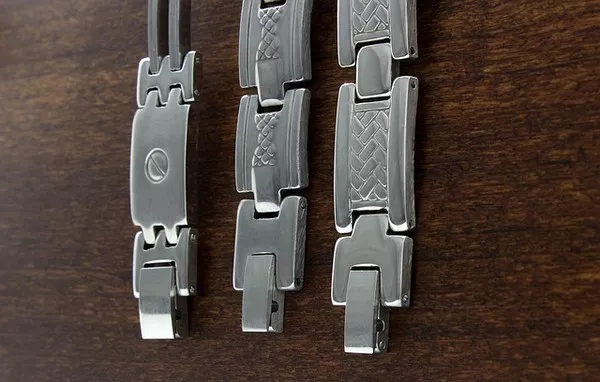In the world of investing, physical silver holds a unique position. Known for its dual utility as both a precious metal and an industrial commodity, silver is a popular choice for investors looking to diversify their portfolios and hedge against economic instability. This comprehensive guide will walk you through the steps of buying physical silver, ensuring that you make informed decisions and secure your investments effectively.
Understanding Physical Silver Investments
Before diving into the purchasing process, it’s crucial to understand why investors turn to physical silver. Unlike paper assets, physical silver is tangible and carries intrinsic value. Historically, silver has been a store of value and a medium of exchange, with a track record of maintaining purchasing power over long periods.
Step 1: Determine Your Investment Goals
Your first step should be to define your investment goals. Are you looking to preserve wealth, diversify your portfolio, or speculate on silver price increases? Understanding your objectives will guide your purchasing decisions, including the type and amount of silver to buy.
Wealth Preservation: If your primary goal is to preserve wealth, you might consider investing in silver coins and bars.
Portfolio Diversification: For diversification, a mix of coins, bars, and possibly silver rounds can offer a balanced approach.
Speculation: If you are speculating on price increases, you might lean towards higher quantities of silver rounds and bars due to their lower premiums over spot prices.
Step 2: Understand the Different Forms of Physical Silver
Physical silver is available in various forms, each with its advantages and considerations.
Silver Bullion Coins: These are official coins minted by governments, such as the American Silver Eagle, Canadian Silver Maple Leaf, and Austrian Silver Philharmonic. They are highly recognized, easy to trade, and come with a guarantee of weight and purity.
Silver Bars: Available in various weights, silver bars are typically produced by private mints. They offer a lower premium over the spot price compared to coins, making them a cost-effective option for larger investments.
Silver Rounds: These are coin-shaped pieces of silver produced by private mints. They have no face value as currency but are a popular choice for investors due to their low premiums.
Step 3: Research Reputable Dealers
Purchasing from reputable dealers is essential to ensure you receive genuine products and fair prices. Consider the following types of dealers:
Online Dealers: Many investors prefer online dealers due to their wide selection and competitive pricing. Websites like APMEX, JM Bullion, and Silver.com are well-known and reputable.
Local Coin Shops: Local dealers can provide the advantage of in-person transactions and the opportunity to physically inspect the silver before purchase.
Auctions: Both online and in-person auctions can be a source of silver, though they require more due diligence to avoid counterfeits and overpaying.
Step 4: Verify Purity and Authenticity
Authenticity and purity are critical when purchasing silver. Most reputable dealers provide certificates of authenticity, and silver products should be marked with their weight and purity (e.g., “.999 fine silver”).
Hallmarks: Ensure the silver items have appropriate hallmarks from recognized mints.
Certificates of Authenticity: These are especially important for higher-value items. They should accompany the purchase to confirm the product’s legitimacy.
Testing Kits: For additional assurance, consider purchasing a silver testing kit or using a professional appraiser.
Step 5: Compare Prices and Premiums
The price of silver fluctuates based on market conditions, and dealers charge premiums over the spot price to cover costs and profit margins. It’s important to:
Check the Spot Price: This is the current market price of silver per ounce. Websites like Kitco and the London Bullion Market Association (LBMA) provide real-time spot prices.
Compare Premiums: Premiums can vary significantly between products and dealers. For instance, government-minted coins typically have higher premiums than bars or rounds. Comparing premiums can help you find the best value for your investment.
Step 6: Consider Storage Options
Proper storage of physical silver is crucial to maintain its condition and security.
Home Storage: Storing silver at home allows for easy access, but it requires secure storage solutions, such as a safe, to protect against theft and damage.
Bank Safe Deposit Boxes: These offer a secure and insured option for storing valuable metals but can be less convenient and incur ongoing rental fees.
Third-Party Storage: Some investors use professional vaulting services that offer high security, insurance, and sometimes even buyback options.
Step 7: Understand the Tax Implications
Silver investments can have tax implications, varying by country and region. In the United States, for example, physical silver is subject to capital gains tax. Understanding these rules can help you plan your investment strategy effectively.
Step 8: Plan for Selling Your Silver
An exit strategy is as important as the purchase plan. Knowing where and how you can sell your silver is crucial for liquidity and maximizing returns.
Selling to Dealers: Many dealers who sell silver also buy it back. This can be convenient but may come with lower buyback prices.
Private Sales: Selling directly to other investors can potentially yield higher returns but involves more effort and risk.
Auctions: High-value items, in particular, might fetch good prices at auctions, though fees and commissions will apply.
See also Where Can I Sell My Silver Bars?
Conclusion
Investing in physical silver can be a rewarding endeavor, providing both financial security and potential for appreciation. By following these steps—defining your goals, understanding the different forms of silver, choosing reputable dealers, verifying authenticity, comparing prices, considering storage options, understanding tax implications, and planning your exit strategy—you can make informed and strategic decisions.
As with any investment, due diligence and ongoing research are essential. The silver market can be volatile, and staying informed about market trends, economic indicators, and geopolitical events will help you navigate the complexities of investing in this precious metal.


